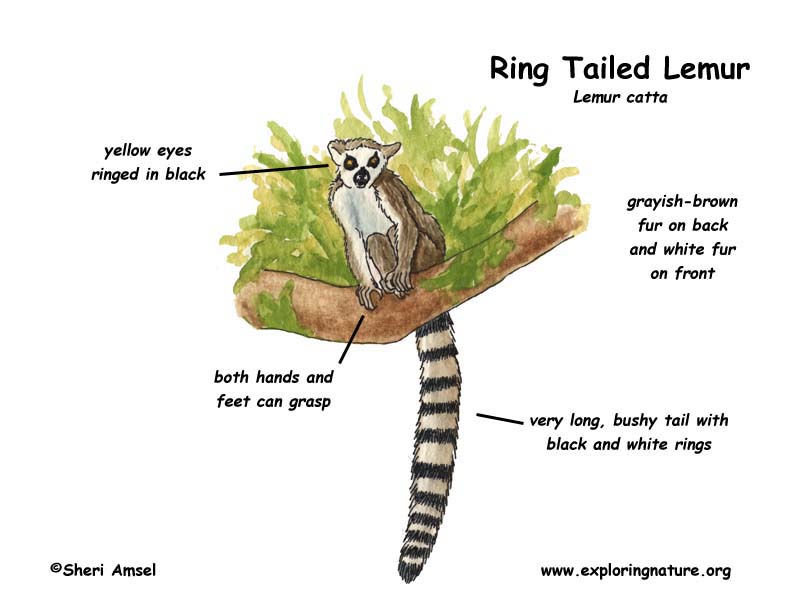


All lemurs live on the island of Madagascar.
Ring-tailed lemurs live in the southern part of the island in open country and thin forests.
Ring-tailed lemurs can be up to 3.5 feet long, including their lengthy tails, which are longer than their bodies. Their bushy tail has black and white rings. They weigh from 5 - 8 pounds.
Unlike other lemurs, the ring-tailed lemur usually walks on the ground or sits on large limbs in open trees. Other lemurs prefer thick forests and travel through the trees. They are active during the day (diurnal).
Lemurs are vegetarians, eating leaves and fruit. They live in groups of 5 to 30 members with females ruling the group.
Predators are hawks, eagles and man.
Females have 1-2 young. They are pregnant for about 4 months (gestation).
They live up to 15 years in the wild. They are listed as a "vulnerable" species.
Kingdom: Animalia
Phylum: Chordata
Subphylum: Vertebrata
Class: Mammalia
Order: Primates
Suborder: Strepsirrhini
Family: Lemuridae
Genus: Lemur
Species: Lemur catta
When you research information you must cite the reference. Citing for websites is different from citing from books, magazines and periodicals. The style of citing shown here is from the MLA Style Citations (Modern Language Association).
When citing a WEBSITE the general format is as follows.
Author Last Name, First Name(s). "Title: Subtitle of Part of Web Page, if appropriate." Title: Subtitle: Section of Page if appropriate. Sponsoring/Publishing Agency, If Given. Additional significant descriptive information. Date of Electronic Publication or other Date, such as Last Updated. Day Month Year of access < URL >.
Amsel, Sheri. "Lemur (Ring-tailed)" Exploring Nature Educational Resource ©2005-2024. December 14, 2024
< http://exploringnature.org/db/view/344 >

